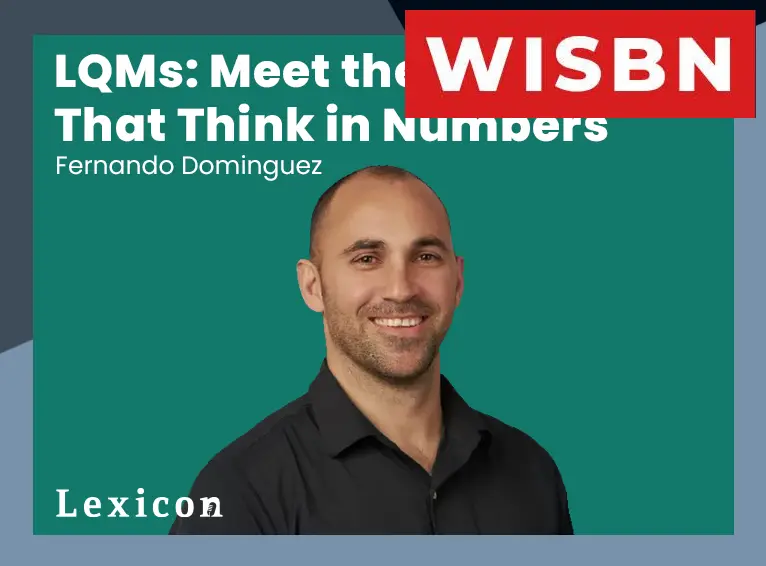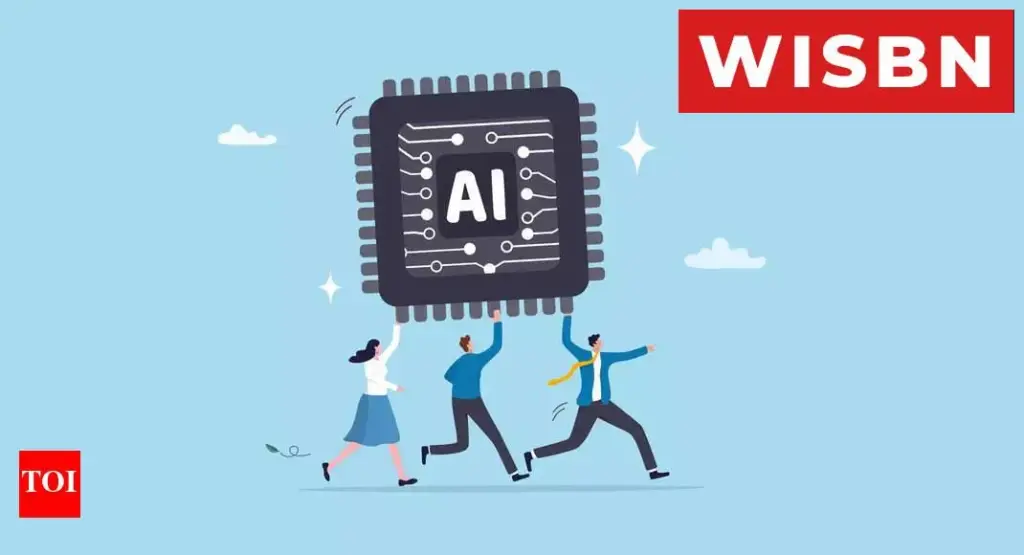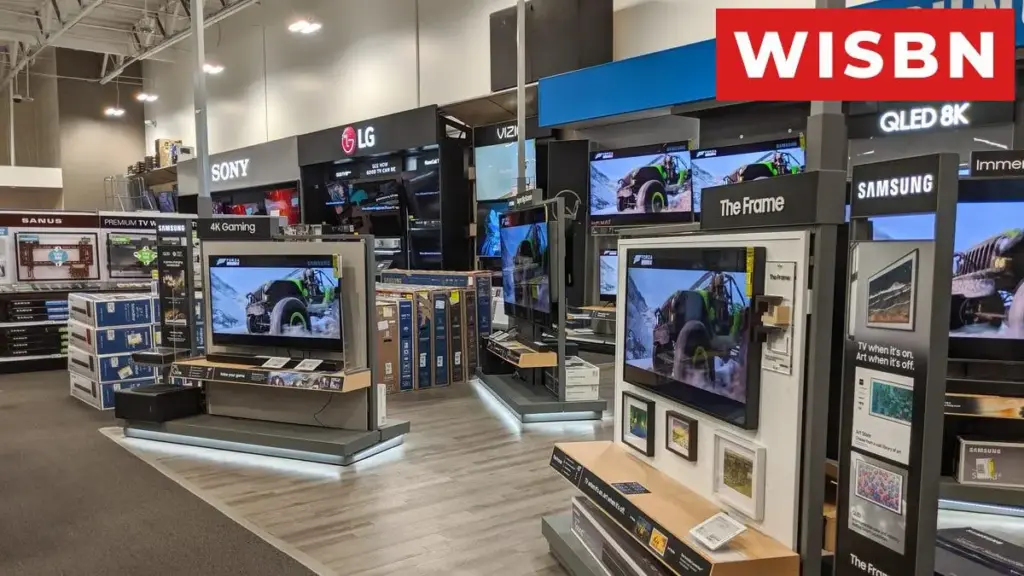What if AI could design new drugs, navigate without GPS, and prevent future cyberattacks?
In our most recent Lexicon episode, we talked with Fernando Dominguez, Head of Strategic Partnerships at SandboxAQ, a company spun out of Alphabet that’s blazing a trail in the AQ (AI + Quantum) arena.
Together, we examined how LQMs are transforming the meeting point of AI and quantum tech, from modeling molecular behavior to navigation without GPS.
What are LQMs?
LQMs are specialized AI systems trained not on internet prose but on numerical, scientific, and physical principles. As Fernando put it, think less ChatGPT and more an AI chemist, financial modeller, or quantum navigator.
While LLMs rely on language datasets, LQMs are driven by physics, biology, and chemistry to produce new data and emulate intricate systems.
“Everyone’s been talking about large language models… but when it comes to what actually drives the economy—manufacturing, drug development, finance—it’s quantitative models that matter,” Fernando told us.
“LLMs are trained on the internet… but the LQMs help you generate new data that’s not available online. For example, how molecules interact with each other—that’s trillions of combinations you won’t find in a dataset,” Fernando added.
“With LQMs, we can now simulate how those molecules behave in the real world without going through the physical lab,” he said. This method is already yielding results in several high-impact domains.
Discovering 5 million molecules in a month
One of SandboxAQ’s most notable applications is a collaboration with UCSF’s Institute for Neurodegenerative Diseases.
“They used to simulate about 250,000 compounds per year. We helped them simulate over 5 million in just a month,” Fernando said. “We achieved 50 to 100 times increases in hit rates, and expanded the work to Parkinson’s, cancer, and more,” he added.
This, he explained, represents a sea change for the pharmaceutical sector, where conventional drug development can cost billions and take more than a decade. According to Fernando, “the success rate for developing a new drug is less than 10%. LQMs help researchers skip the dead ends and focus only on the most promising compounds.”
But the potential for LQMs is not confined to biotech alone.
Defending the future
As quantum computers approach practical capability, today’s encryption grows ever more at risk. SandboxAQ is prepping critical systems for that post-quantum era.
“Nation-states are stealing your encrypted data today. They can’t read it now, but once they have a quantum computer—in three years, seven years, we don’t know—they will be able to,” Fernando warned.
Their product, ActiveGuard, continuously scans an organization’s infrastructure to map cryptographic systems and enable quantum-safe upgrades.
“Most organizations have no idea what encryption they’re using. You need a real-time tool that can spot expired credentials, legacy systems, and help you remediate before it breaks,” he added.
This work is already deployed by entities like the U.S. Air Force, Visa, and major banks.
Quantum navigation in GPS-denied zones
Another field where AI and quantum meet is navigation without GPS. In conflict areas or GPS-jammed settings, conventional navigation can fail.
“You can literally buy a jammer on Amazon. Last year, 41,000 airplanes were spoofed or jammed in just two months,” Fernando said. Inspired by nature, SandboxAQ’s approach harnesses Earth’s magnetic field like birds and whales do.
“Every point on Earth has a unique magnetic fingerprint. With quantum sensors and AI models, we can map it accurately,” he added. These models are so sensitive that they must discard 99.9% of noise data, a task only feasible with high-performance AI.
“That’s how quantum merges with AI. Without denoising AI models, these sensors would be too noisy to use,” he said.
From MRI to heart monitoring
The identical quantum sensing technology is now being introduced into hospitals. In collaboration with Mount Sinai, Cleveland Clinic, and Mayo Clinic, SandboxAQ has built a magnetocardiogram device to track cardiac activity.
“It measures the magnetic field of the heart, not just the electric signal like an EKG. And it’s non-invasive, portable, and more precise,” he said. “Our team discovered that elevator motors were interfering with the signal—we used our models to cancel the noise,” he added.
Fernando noted that cardiologists are enthusiastic. This fresh data source enables earlier and more accurate diagnoses.
Enter the Agentic AI chemist
Another striking advance is what Fernando dubs the Agentic AI Chemist. “Think of AI agents like ultra-efficient employees, each with a job: one to scan papers, one to model molecules, one to calculate bindings. Together, they do in days what used to take years,” he said.
“We’re seeing a new generation of talent—computational physicists, chemists, biologists—people who blend disciplines to build AI-native companies,” he added.
To operate all of this, you need enormous compute capacity. SandboxAQ teams up with Google, Microsoft, AWS, and NVIDIA to scale. NVIDIA and Google are now also investors.
“You can be great at software, but if you don’t understand the hardware—CPUs, GPUs, QPUs—you won’t be able to scale. That hybrid high-performance computing stack is the future,” he said.
See also: Sunrise New Energy Ranks Among Top Global Battery Material Suppliers
Looking ahead
“First, it’s about talent. The organizations that master AQ—AI and quantum together—will lead,” he added.
“Second, it’s the convergence of CPUs, GPUs, and QPUs. We’ll send a problem to a platform, and it will split it between the right hardware for each task. That’s the next big leap,” he said.



